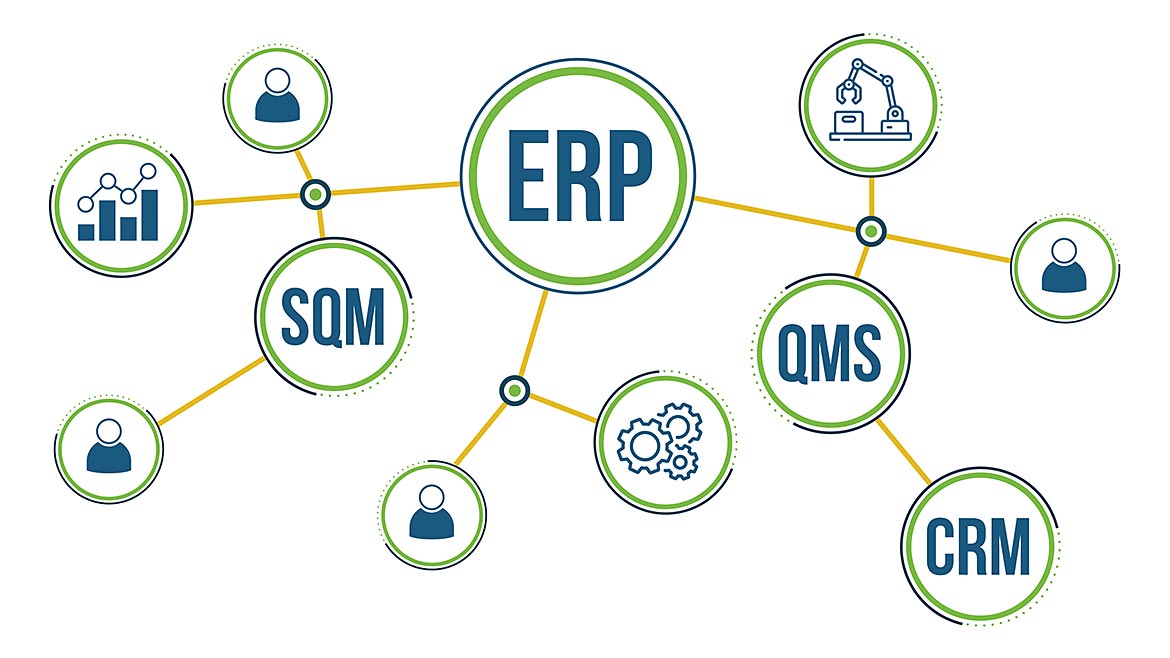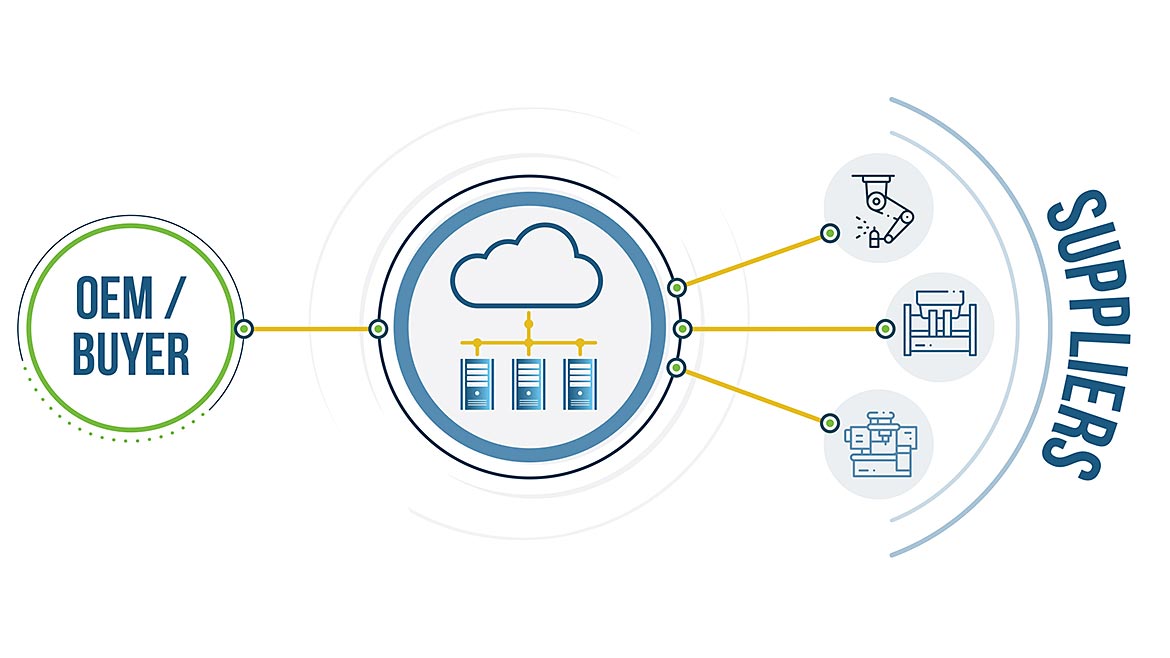Software & Analysis
How modern software can transform the supply chain with manufacturing quality at the center
Enable a manufacturing quality-driven collaboration between suppliers and buyers to eliminate interpretation, reduce costs, risks, and expedited delivery time.

All Images Source: High QA
Billions of parts are manufactured every year. Thousands of planes, millions of cars, millions of machines, countless products used in agriculture, defense, medical, oil & gas and more are made every year. As a result, everything we use every minute of every day is made from parts that were manufactured somewhere. Billions of them. According to some experts, the value of those parts is estimated at $15 Trillion, growing at 3.6% CAGR!
The Problem
Supply chain stories keep coming up in the press. Let’s take a recent one as an example: A large manufacturer of aircraft reported $27B in losses quoting, “Fixing supply chain constraints is frustratingly slow.” By being close to the manufacturers in that supply chain, we can see that the root causes are multiple. Of course, outside forces such as the pandemic or geo-political events can create havoc. Those, unfortunately, are outside of our control. But once we dig a little further, we find hundreds of “lates” everywhere in the supply chain and most of these could be in our control. For example, another aircraft manufacturer could not deliver dozens of planes, all parked outside for everyone to see, because they were missing engines. Those engines were delayed by parts that were “lates” resulting from, for the most part, supply chain readiness issues.
Additionally, we see an escalation of quality requirement standards such as AS9102 Rev C. There are dozens more standards in medical, automotive, and many other industries. These requirements are a good thing: they ensure that all components and parts are manufactured to the best possible standards.
In short, we have more and more “lates” and more and more “requirements.” Therefore, the opportunity is to make sure that:
Buyers share or “flow down” the right requirements to suppliers, and
Manufacturers can easily access those requirements and know exactly what to plan, how to make and how to report without interpretation

How Can Software Help?
What we hear from customers is that, ideally, they would like to stop using multiple solutions, spreadsheets and scanned documents, which are hosted in countless folders with inadequate sharing tools. Keeping track of revisions is a real pain. We have evidence of “lates” caused by the inability of staff to cope with the increasing volume of requirements and their difficulty pinpointing exactly where those documents are, what they mean, and how the standards interact with each other. Some prints refer to documents that are outdated or difficult to find.
As a result, planning a part for quality production can take days. Collecting data on production quality and processing a single FAI can take days. Getting resolution on non-conformances can take days with each party pointing fingers at each other.
To solve this problem, we need to step back a bit and look at a typical scenario from a buyer’s “I need this made” to “the part is ready” from a manufacturer, from “dock to stock,” with minimal incoming inspection. The common language from beginning to end should be quality. If the buyer can use software that can articulate exactly ALL the requirements and share those with relevant manufacturers who can quote with FULL knowledge of what is expected, then there should be no surprises.
If we can solve that equation, we can perhaps begin to dream about saving the billions of dollars wasted in resources, time, and frustration.
Modern software can help by bridging the gap and allowing quality to be at the center of collaboration between buyers and manufacturers. Most companies we work with have an alphabet soup of software already in use from mundane spreadsheets and PDFs to ERP, CMM, CAD/CAM, Quoting, Quality, MRP, portals, e-market, and more. The key word here is almost a taboo: Integration. Most of those systems are closed and accept limited, if any, integration with each other. Everyone works in a quasi-siloed system with a quote engine featuring minimal linkage to quality data while shipping and receiving goods with ERP systems that are ill conceived to share submissions of quality data and reports that should be attached to the parts.

At the manufacturer level, we need complete visibility of quality requirements at the quotation stage. Having all the specifications available without needing to interpret the data presented is key. Also, having past experiences with quality on similar jobs can help. We need a system that brings the buyer's data seamlessly into the quality system to automatically balloon drawings with authority, create plans in minutes, and outline areas of questions or concerns before the quote is sent. Ideally, that system should also investigate historical data on that part, if it is a “repeat,” or similar jobs that fit the general requirements.
This requires software to operate virtually from a single trusted source, database-driven, with all the ingredients needed to make fast decisions including:
- Who should I send the RFQ to? Who’s the best at this requirement?
- How should I respond to the RFQ within hours with 99% confidence level? What data do I need to make sure we looked at all the requirements? Can I make sure we see past performance and make good decisions?
If we start with the hypothesis that quality requirements, capabilities, and reporting of production data need to be at the center of the collaboration between suppliers and buyers, then we need the tools we use every day (ERP, CMM, CAM…) to communicate with each other with a single source of the truth: Quality data.
Ideally, we need one that can do this repeatedly and consistently across multiple suppliers, customers, parts, and more. The best way to start the journey is to identify what can be done internally. How many quality software solutions (and/or manual processes) do we use in our quality department? Chances are that we’re using quite a few disparate tools and processes to create a plan or an FAI – we still work in silos where the world moved decades ago to an “all-in-one” solution. Think about all the CMMs we have in the shop, the gages that have data capture capability, the monitoring systems attached to our machines that record in-line inspection data and more. All those systems require humans to grab each piece of data and assemble their master document.
We ran a survey recently, and developed a simple web tool to identify these costs and what could be saved by using a modern software solution. The results are quite revealing. Most leaders have no idea how many heroics are performed every day by our devoted colleagues in the quality process. [If you can, please visit THIS LINK and have a look for your organization.]
Next is to bring your suppliers virtually into your shop floor despite the distance. Of course, it needs to be secured, partitioned, and compliant with the latest data sharing compliance requirements codified in the most stringent protocols for your industry such as ITAR, HIPPA, NIST, and others. Once this hurdle is cleared, modern software can be used to share quality requirements from buyer to suppliers in one place. This can be linked to a portal or e-market relatively easily.
From there, manufacturers can embed those requirements into their quoting programs and processes, easily balloon (2D or 3D) a part, identify areas of potential challenges, and quote the part with confidence.
Once the job is awarded, the same centralized database can be used to collect production data seamlessly from almost all connected devices and produce production reports and submission package (PPAP) without spending days. Those reports can be stored, analyzed, and shared easily for approval and archiving.
Ideally, the FAI or PPAP is approved by your customer before the parts are shipped, eliminating costly rejections and incoming inspections.
In short, modern software should allow you to bring suppliers into your quality system, just as if they were part of your organization, removing all unnecessary rework to convert their submissions into your systems.
Now What?
Fortunately, such modern software exists already. Please check with your quality team or your sourcing team. Start the conversation and discover what’s possible for you and your team.
I welcome your calls, suggestions, and comments.
Looking for a reprint of this article?
From high-res PDFs to custom plaques, order your copy today!





